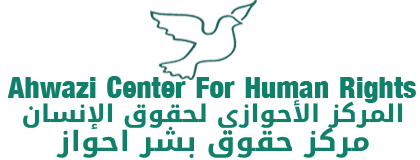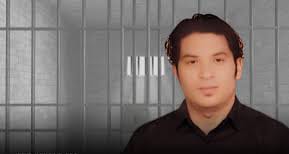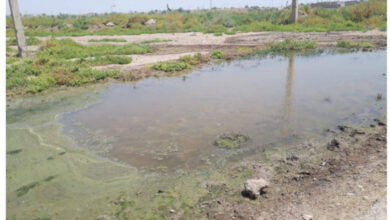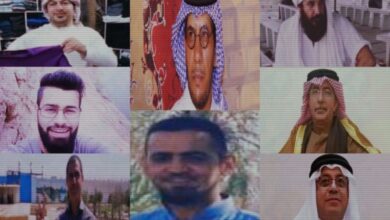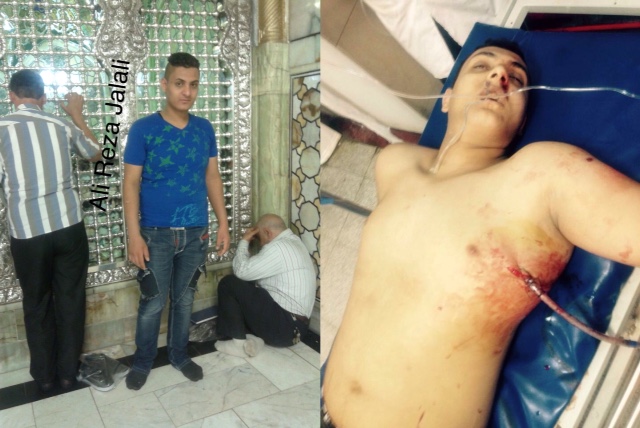
An unarmed 17-year-old Ahwazi Arab boy, named as Ali Jalali, was shot dead by Iranian security forces in the Nahdhe(known also as Lashkarabad)
neighbourhood of the regional capital, Ahwaz, on the evening of Monday, November 9, 2015, with a number of other residents injured in the regime forces’ indiscriminate gunfire. The teenager died while he was attempting to prevent the regime security forces from confiscating his food stall and the foodstuffs he was selling, which were his sole source of income.
The shooting followed peaceful demonstrations by residents protesting against orders by the regime to shut down popular Arab restaurants and cafés in the district, which were followed by brutal raids by regime forces. The closures and raids on the restaurants, which specialised in the popular local seafood dishes and falafel, and were popular with tourists as well as locals, were another demonstration of the excessive restrictions placed on Ahwazi Arabs by the regime.
Due to desperation, poverty and job discrimination, there has also been an increase in self-immolation in Ahwaz. One example is that of Omid Rashedi Amiri”, a 36-year-old Ahwazi citizen. He was suffering due to unemployment and not having his job contract renewed. He set himself on fire in protest and tragically died. Omid was married and had children. He self-immolated on Wednesday 2nd October at the Trade Unions office in Khalafiya County and was taken to Ahwaz Taleghani Hospital. There he passed away due to his severe injuries.
Another example was Younes Asakereh, also an Ahwazi Arab street vendor. In March, his fruit kiosk was confiscated, he lost his means of employment, and in March, he self-immolated in protest in front of the City Hall and died from his injuries.
There is “wholesale oppression” going on in Ahwaz, which wrought a fearful environment for Ahwazis. Ahwazi Arabs are subjected to severe poverty despite that the region of Al-Ahwaz reserves more than 90% of the natural oil and gas in Iran. Local authorities employ people of other provinces in petrochemical and agricultural companies while indigenous people are jobless due to racial discrimination. Farming lands of Arabs are confiscated by the Sepah forces (Revolutionary Guards) without compensation and gave to sugar industrials. Local rivers and marshes were dried due to building many water dams and water were diverted to the Northern provinces such as Isfahan and Shiraz and that caused the environmental crisis in Ahwaz and migration of local Arab farmers. Many cities and villages have not reconstructed since the eight-year war ended between Iran and Iraq in 1988, and thousands of hectares of lands still contaminated with millions of land mines.
Despite promises for a better situation given by Iran’s current President, Hassan Rouhani, the condition for Ahwazi Arabs and other ethnic groups has not improved at all. The heightened persecution was fully predictable despite Rouhani’s smiles.
Rouhani, came to power as an advocate of human rights and reform, and has been viewed as a moderate among West so far. He delivered several speeches promising amelioration in many issues during his presidential election campaign as he was passionately expressing his goal to uphold human rights and ensure equal rights for all people in Iran: instead after two years of his realm of power he became the king of executions. More than 2000 executions carried out under Rouhani office yet the U.S. and West powers continue to insist on Rouhani as a sincere mediator.
Background: Who are the Ahwazi people?
Around 10 million Ahwazi Arab, inhabit in the south and southwest of Iran. They are one of the oppressed people in the Middle East. They are united by race, culture and language. Their Arab dialect resembles Iraqi Arabic dialect and Khaliji (Gulf accent). The Majority is Muslim although; there are a number of religions and creeds like Christian and Mandaean. There is a deep-seated hostility by Iranian regimes against the Ahwazi Arab people due to their Arab ethnicity, who constitute 10% of the population. Since 1925 after the topple of the emirate of Ahwaz ruled by Amir Khazaal Al-Kaabi through the military invasion of the Iranian regime which resulted in ending the independent sovereignty of Ahwaz and its annexation to the newly formed country of Iran.
Written by: Rahim Hamid
Source: click HERE
Ahwazi Centre for Human Rights
13-11-2015
